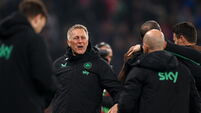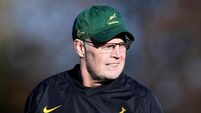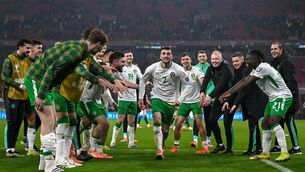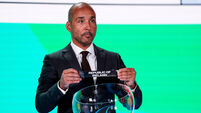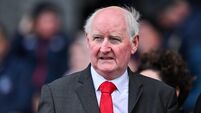John Riordan: The North Carolina teenage dream that gave voice to the world's game
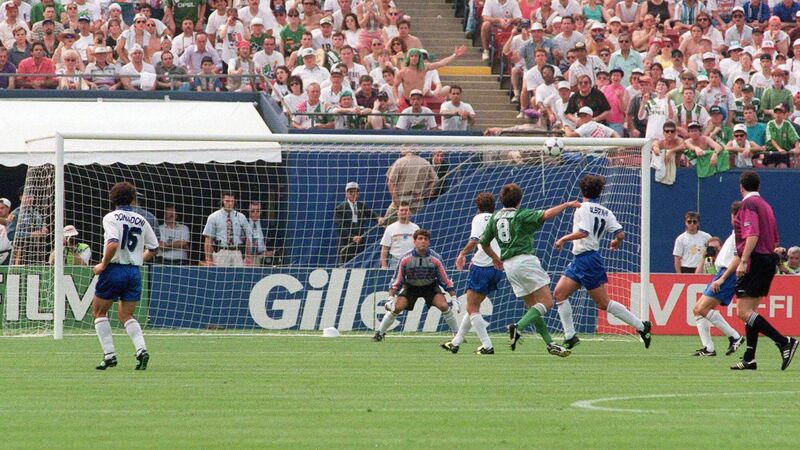
22 million subscribers believed in the football brothers who saw opportunity in what was once dismissed as a European sport
There are many threads to pull out of the upbringing enjoyed by US soccer entrepreneurs Mike and Brendan Moylan to try and explain the forward thinking niche they carved out for themselves at the right time, over and over again.
You could go back to the dairy business forged out by their first generation Irish-American grandfather who catered to fellow early 20th century immigrants similarly cast out by the rest of society. North Carolina is home now but their large family moved far and wide, west from Boston to Seattle, south to San Antonio and north to Wisconsin.
Given the nature of their surgeon father’s profession, they ended up at the 60s and 70s soccer hotbeds in Wisconsin and North Carolina which were bolstered by international graduate students. This was a new wave of growth of the game after the other working class immigrants from Europe and South America imported football in previous decades.
The fact that these were relatively tiny cultural revolutions — crushed rebellions, maybe, in the face of the indomitable big four? — didn’t dissuade the Moylan brothers from responding to a high school project in the most destiny-changing way imaginable.
As teens, they were challenged to visualise where they would be by the time they were 30 and — in order to get them there — was there a hobby in their life from which they could mine a business idea?
This was a no-brainer for the pair; surely there were other 17- and 18-year-olds out there who were similarly obsessed with European football? Surely the market was big enough?
With a little seed money from their father, a threadbare business plan and some minor market research carried out in their own household, Mike and Brendan launched their ‘Eurosport’ publication, a fusion of part magazine, part fanzine and part revenue-driving catalogue of soccer merch and kit.
“Boots, bags and balls, shirts, shorts and socks,” is the mantra Mike repeats for me more than once when I caught up with the fraternal duo behind Sports Endeavours Incorporated and Soccer.com via Zoom this week.
The first Eurosport issue was sent out late in 1984 to 6,000 fellow football obsessives from their small HQ in Durham, North Carolina.
“We were out pitching the concept to people, ‘we’re going into the soccer business’,” recalls Mike, “and they would say ‘that’s a Euro sport, right? That’s just a European sport. Americans wouldn’t be interested in that’.”
The name they chose was a tribute to the undervalued underground culture in which they were immersed. The received wisdom was that no one was taking football seriously enough in the US in the 80s but the Moylans were now firmly ahead of the game.
“Like anything it started off small and regional,” Mike told me. “Because of the network of universities and the contacts, people would leave Duke, North Carolina, North Carolina State and go off to be disciples for what we were trying to do.
“There was a massive youth soccer programme across the US that didn’t necessarily generate any international superstars but, from a participation perspective, it was the most organized in the world. There were more kids playing soccer in the US than anywhere else globally. It was the early 80s and it was just prime for taking advantage of that.”
Long before the internet, they consumed as many different types of football publication as they could. From international newspapers to glossy magazines and even the various British football fanzines which were so prevalent that decade. They would then distill all that copy into their own publication, bottling up the culture for American teenagers just like them.
At its peak, the Eurosport mailing list would eventually number 22 million people. Fast forward a decade and a friend who was in naval intelligence suggested to them that this internet thing was worth pumping some dollars into. For the grand sum of $25, they became the proprietors of the Soccer.com URL.
That friend took Brendan’s credit card details and called an office somewhere in Washington, DC.
“The person at the other end of the phone wrote it down,” Brendan recounts, “and then we got a confirmation through the mail. Maybe we got a fax, I can’t remember,” he adds laughing.
Once again, there wasn’t a grand plan. Just like in high school, they were making a modest step forward which felt like a natural one.
“What we didn’t know then is that we could have bought any number of potentially lucrative URLs,” smiles Brendan. “We actually missed out on a wild fortune.”
They could be forgiven for thinking solely about the business they were creating. In this case, their navy friend told them to think like military service members. When utilising the internet, from an intelligence perspective, they searched simple terms in order to find what they were looking for. So if people in the military were looking for soccer gear, it was better to lure them in via Soccer.com.
“It wasn’t on the basis that that was going to be our business,” explains Mike. “It was really pretty straightforward that this would simply accomplish selling some boots, bags and balls to armed services members around the world. We would certainly soon learn that there was a bigger opportunity, but that was ‘94.”
A year with particularly poetic resonance. The long feared US 94 World Cup was landing amidst concerns both domestically and internationally that the event would be an embarrassing catastrophe.
“People are talking about Qatar this year and how we shouldn’t put on a World Cup in the desert,” said Mike. “Back then, there were certainly people that thought ‘how dare they put it in a country that doesn’t have a football heritage’.
“They were predicting empty stadiums and cheerleaders and all that nonsense. Meanwhile, the American traditional sports guys were worried there would be marauding groups of hooligans setting New York on fire.
“But in the end, the event was massive. It gave people here an understanding, maybe for the first time, about fan culture and the history of the game. As a country of immigrants. It was so impactful. It reenergised the Italian community in New York, reenergised the Irish community.
“For us, being sort of right in the middle of that, it enabled us to sort of be the young darlings of all things soccer for that year, and then the knock-on effect was officially going online in 1995. It positioned us very, very well.”
America was the land of promise for the growth of the game and they were the gateway. In order to illustrate the point, Mike leans back to retrieve an Adidas Questra ball from his busy shelving of soccer memorabilia. It was the official 1994 match ball gifted to them and signed by Adidas icon Franz Beckenbauer. This was back in ‘93, months before it would be released to the world.
When Jack Charlton visited their state around that same time to visit some coaching camps and enjoy some fishing, the Moylans were integral members of tiny ad hoc welcoming committees in random bars.
Even after the success of the World Cup, the top global stars would enjoy complete anonymity during subsequent tours to the US. But the game was bubbling up dramatically for Sports Endeavours and they would eventually shift the business away from Eurosport and fully into Soccer.com in the early 2000s.
They rode the wave they helped create but they also enjoyed the cultural growth of their game and the positive impact it was able to have on society. Just like their grandfather’s dairy business between the wars, inclusivity didn’t just make economic sense.
In the early 90s, they highlighted the plight of Dutch international Aron Winter who, while playing in the Serie A for Lazio (and subsequently Inter Milan), was subjected to racism.
“I lived in London for a little bit in the 80s,” Mike told me. “We’d go to Chelsea and you would see it happening. And while it happened and it was frowned upon it really wasn’t being reported as being an issue. To an American eye, you’re thinking that ‘hey, this might be a problem right?’ We wanted to give voice to that.”
And then there is access to the game for girls, the most talented of whom grew up to rule the world. The Moylans had a front row seat during a long fruitful era which saw the US set the benchmark for how to better appreciate the importance of the women’s game.
“And we’re certainly seeing US male players being able to hold their own on a global basis,” added Mike before we say goodbye. “The World Cup will be here in 2026 and that will be a huge build for everyone in the industry. There is a lot to be positive about. Covid has reignited parents’ interest in having their kids out and about and that can only take everyone in the right direction, ultimately.”
- @JohnWRiordan

